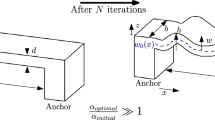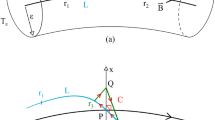Abstract
Cyclically asymmetrically distributed charges introduced to explain a cause of gravity produce significant directed forces for useful safe energy generation, as harnessed by the Electric Kinetic Pulse generator, an experiment to illustrate cyclically asymmetrically distributed charges. This is established by analysing solutions to the equations of motion and energy of 4 charges in the Electric Kinetic Pulse generator, as they alternately move close to and from electric field singularities using repulsion in each of the 4 cylinders; with extensions to several charges. The system is shown to be robust against transverse vibrations. The theoretical validity of the generator and the principles underlying cyclically asymmetrical charge distributions is established. The theoretical verification proposes an iterative process for solving first order differential equations which requires continuity but no separation of variables. Ample useful nuclear energy independent of heat phenomena or the atmosphere can be generated with no harmful radiation or radioactive waste.
Similar content being viewed by others
Availability of data and material
All data generated or analysed in this study are included in this article.
References
Ain QT, He JH (2019) On two-scale dimension and its applications. Therm Sci 23:1707–1712. https://doi.org/10.2298/TSCI190408138A
Audu MO, Terwase AS, Isikwue BC (2019) Investigation of wind speed characteristics and its energy potential in Makurdi, North Central, Nigeria. SN Appl Sci 1:178. https://doi.org/10.1007/s42452-019-0189-x
Barato F, Torson E, Paravin D (2021) Variations and control of thrust and mixture ratio in hybrid rocket motors. Adv Astron Sci Technol 4:55–76. https://doi.org/10.1007/s42423-021-0076-3
Basu A (2017) Simplifying the one-loop five graviton amplitude in type IIB string theory. Int J Mod Phys A. https://doi.org/10.1142/S0217751X17500749
Biello D (2009) Spent nuclear fuel: a trash heap deadly for 250,000 years or a renewable energy source? Sci Am. https://www.scientificamerican.com/article/nuclear-waste-lethal-trash-or-renewable-energy-source/
de Lima EG (2022) Space engineering design concept for installing a space heavy crane to ascend and descend payloads. Adv Astron Sci Technol 5:183–193. https://doi.org/10.1007/s42423-22-00197-7
Feller W (1971) An introduction to probability theory and its applications, Chap. 8, vol 2, 2nd edn. Wiley, New York
He JH (2006) Some asymptotic methods for strongly nonlinear equations. Int J Mod Phys B 20:1141–1199
He JH (2019) The simplest approach to nonlinear oscillators. Results Phys 15:102546. https://doi.org/10.1016/j.rinp.2019.102546
Jackson JD (1975) Classical electrodynamics, Chap. 17, 2nd edn. Wiley, New York
Pepermans L, Oliver Sholtz S, Menting E et al (2022) Integration of the Lerge Envelope Advanced Parachute System in Stratos IV. Adv Astron Sci Technol 5:295–308. https://doi.org/10.1997/s42423-22-00098-5
Quinn T (2016) Gravity on the balance. Nat Phys 12:196. https://doi.org/10.1038/nphys3651
Tsakok AD (1987) Statistics and the unified field, Chap. 12. AD Tsakok Mathematical Centre, London
Tsakok AD (2003) A derivation of Newton’s law of gravitation from electromagnetic forces. Bulg J Phys 30:7–20
Wright M (2016) Buchdahl’s inequality in 5-dimensional Gauss–Bonnet gravity. Gen Relat Gravit. https://doi.org/10.1007/s10714-016-2091-9
Yang L, Zhan W (2017) A closed nuclear energy system by accelerator-driven ceramic reactor and extend AIROX reprocessing. Sci China Technol Sci 60:1702. https://doi.org/10.1007/s11431-017-9089-0
Acknowledgements
The author would like to thank AD Tsakok for the support over the years.
Funding
There is no funding obtained.
Author information
Authors and Affiliations
Contributions
The author contributed to the entire article.
Corresponding author
Ethics declarations
Conflict of interest
The author has no conflict of interest to declare that are relevant to the article.
Ethical Approval
The article does not contain any studies with human participants performed by any of the authors.
Informed consent
For this type of study, formal consent is not required.
Appendix
Appendix
Figure 1 Key:
-
1.
Source of charges, with + for positive charges and − for negative charges. The arrow indicates the required direction towards the target plate (4). There is an insulator between the charge source and the metal cylinder (8) holding it. The outlet for the charges needs to be closed or open as required, to regulate the number of charges in the cylinder. The positive charges may be ionised argon, and the negative charges may be electrons from thermionic emission.
-
2.
Programmable logic controller (PLC), with input and output shown by the arrows. The input is the pulse from the charge detector(s) via its circuit (3). The outputs of the PLC are the switches enclosed within dotted boxes. The PLC need to be programmable with a high level language (e.g. VB6) to take advantage of the computations of charge dynamics.
-
3.
The circuit D of the charge detector, with antenna (6) insulated from the prism holding it. The charge detector seems best to be an FET gate, and the circuit would probably have a filter to remove the noise, and an operational amplifier to magnify the signal from the charge radiation. There may be more than one detector, in which case the charge signals need to combined in an AND gate before they are inputted into the PLC.
-
4.
Target plate, insulated (7) from the rest of the cylinder.
-
5.
A combination of switches to various resistances. These switches may each be at the gate terminal of an FET used as a resistor.
-
6.
The antenna of the charge detector, which may be an FET gate.
-
7.
The insulation between the target plate and the rest of the metal cylinder.
-
8.
The metal cylinder, probably of copper, holding a vacuum.
Rights and permissions
About this article
Cite this article
Tsakok, J.D.W. Energy Generation Using Cyclically Asymmetrically Distributed Charges. Adv. Astronaut. Sci. Technol. 6, 101–115 (2023). https://doi.org/10.1007/s42423-023-00145-9
Received:
Revised:
Accepted:
Published:
Issue Date:
DOI: https://doi.org/10.1007/s42423-023-00145-9





